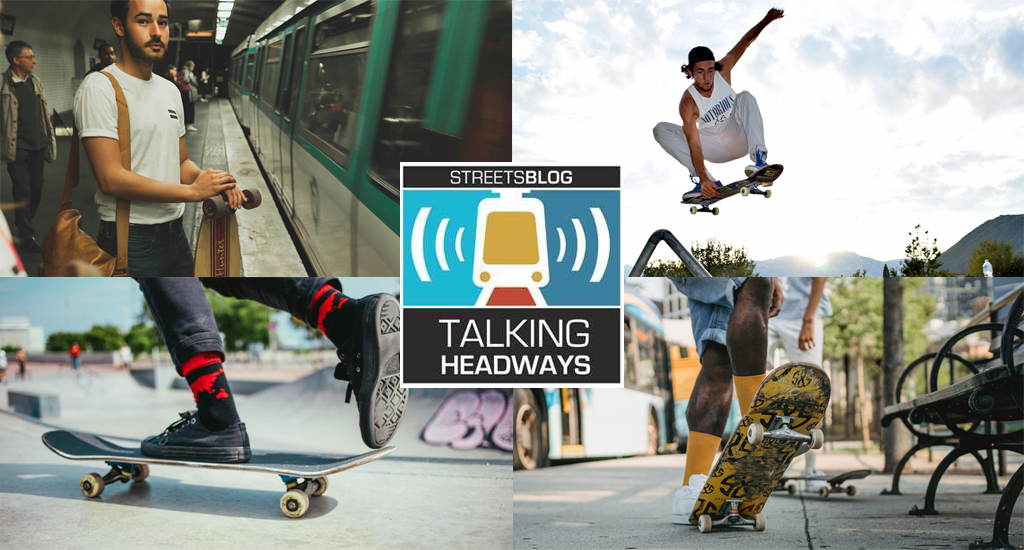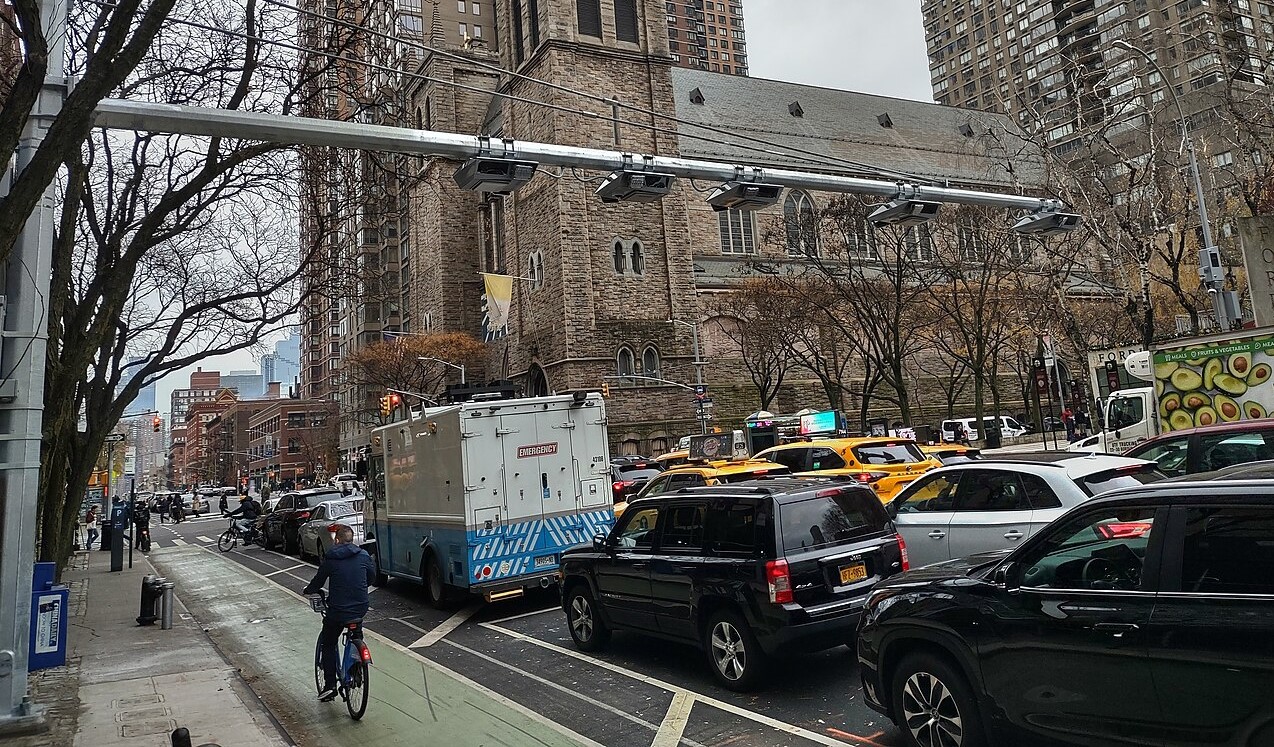This week we’re joined by skateboard advocate Aaron Breetwor, brand manager for Comet Skateboards. Aaron chats about using skateboards for transportation, designing streets for safer skateboarding and last year's incident at the Dolores Street hill bomb.
You can find a partial transcript of our conversation under the audio player below. Click here for a unedited, AI-generated full transcript.
Jeff Wood: I was reading some pieces by Sonoma State professor Kevin Fang, who’s also an avid skateboard supporter, and the quote that I brought out of one of his papers was blending near bicycling speeds with pedestrian-like flexibility, which makes a lot of sense when you think about it. You can use it as a pedestrian and you can use it on a bus, you can use it going to the grocery store, you can basically carry it with you when you get off, when you stop being a skateboarder and you start being a pedestrian. Whereas, the walk sheds and the bike sheds and all the sheds we talk about — there’s probably a skateboard shed, right, that ends and starts at the front doors of wherever you went and wherever you’re going. And so I found that really interesting too, that discussion of efficiency and an acknowledgement that it’s not gonna be for everyone, but it’s definitely gonna be for some people.
Aaron Breetwor: Right, exactly. I think by advocating for skateboarding, I am not advocating that everybody become a skateboarder. My interest is largely in transportation officials and transportation advocates becoming champions of skateboarding because of the implications it has for the built environment and the way that we think about building infrastructure. I mean, as far as efficiencies are concerned, in the room that I’m in right now, which is just my back office, I think I have these 10 skateboards either hanging on the wall or in some piles in the closet. And I can’t imagine being in a room with 10 bikes. My partner and child would not be happy, but skateboards can serve as decoration. And I think we know that a bus only has room on the front in San Francisco for four bikes.
And I’ve been on the back of a bus in San Francisco with 30 people with skateboards. The ability to transition, as you said, between being a pedestrian and then being somebody who can move as fast or faster than a bike as fast or faster than a car and still be in control, just it means that you’ve got a superpower that’s not accessible to any other mode.
Jeff Wood: Ninety percent of California cities regulate skateboards in some way. What did the laws usually say about skateboarding?
Aaron Breetwor: California is really unique in terms of its skateboarding laws because at a state level, the only thing that’s stipulated is that every city gets to make its own skateboarding laws. Other states don’t include skateboards in their vehicle code at all. There are some advocates in Oregon who really struggle with the lack of a legal status, period, for skateboards. It makes it very challenging for them to put forth city level legislation, let alone state level legislation. California’s permissive state level law means that San Francisco can come up with its own. And we’ve got one I would say of the best city level laws in the country.
Here, skateboards are classified as non-motorized user propelled vehicles that excludes bicycles because bicycles are legislated at the state level. They exist more ubiquitously within the vehicle code. And there’s very few city level laws that apply to bikes that don’t apply at the state level as well. But for us in San Francisco, the non-motorized user-propelled vehicle status allows us to operate in the street and on the sidewalk, meaning we have actually the most legal protections of any other class of vehicle. Also included in the non-motorized user propelled vehicle banner are roller skates, rollerblades and push scooters.
That means that the collection of vehicles here all stand to benefit from things that accommodate them — which seems sort of obvious, but when people say sustainable transportation, they often say walking and biking or walking and biking and transit or walking and biking and transit and rolling. You just don’t really get there if you don’t actually nod to those particular vehicles that are addressed within that classification of non-motorized user propelled vehicle. And I would argue that the skateboard of all of those modes is the one that’s the most important to cite because it is the most vulnerable.
Jeff Wood: And vulnerable In what specific way? I saw a thing that said basically 75 percent of skateboard deaths are from cars. So is that the vulnerability to collisions to interacting with other transportation modes, or also just being outcast by business districts and people that just don’t like the idea of the noise that comes from skateboards or whatever it may be?
Aaron Breetwor: I think the cultural vulnerability is super important to note. Specifically what I’m talking about is the size of the wheels. Roller skates and roller blades have a similar size of wheel, however, they’re just not used as ubiquitously. And so I would for the moment, discount them from this conversation if we were just to compare scooters and skateboards, the wheels of a scooter tend to be much larger, even just twice as big as a skateboard wheel. And so the smaller the wheel, the more vulnerable the vehicle is to whatever exists in the roadway. And so the same things that affect, say somebody with crutches or a walker or a wheelchair or a cane, also have an impact on people who use skateboards.
Of the small wheeled modes skateboards are one of the most common that is used for transportation and any sort of elements in the built environment that are made or left in disrepair that as a result of their status don’t accommodate the smooth movement of small wheels makes it harder for a skateboard to get through the built environment. So the vulnerability of a skateboard is largely due to the fact that they’re not accounted for as a mode and they’re therefore not designed for.






